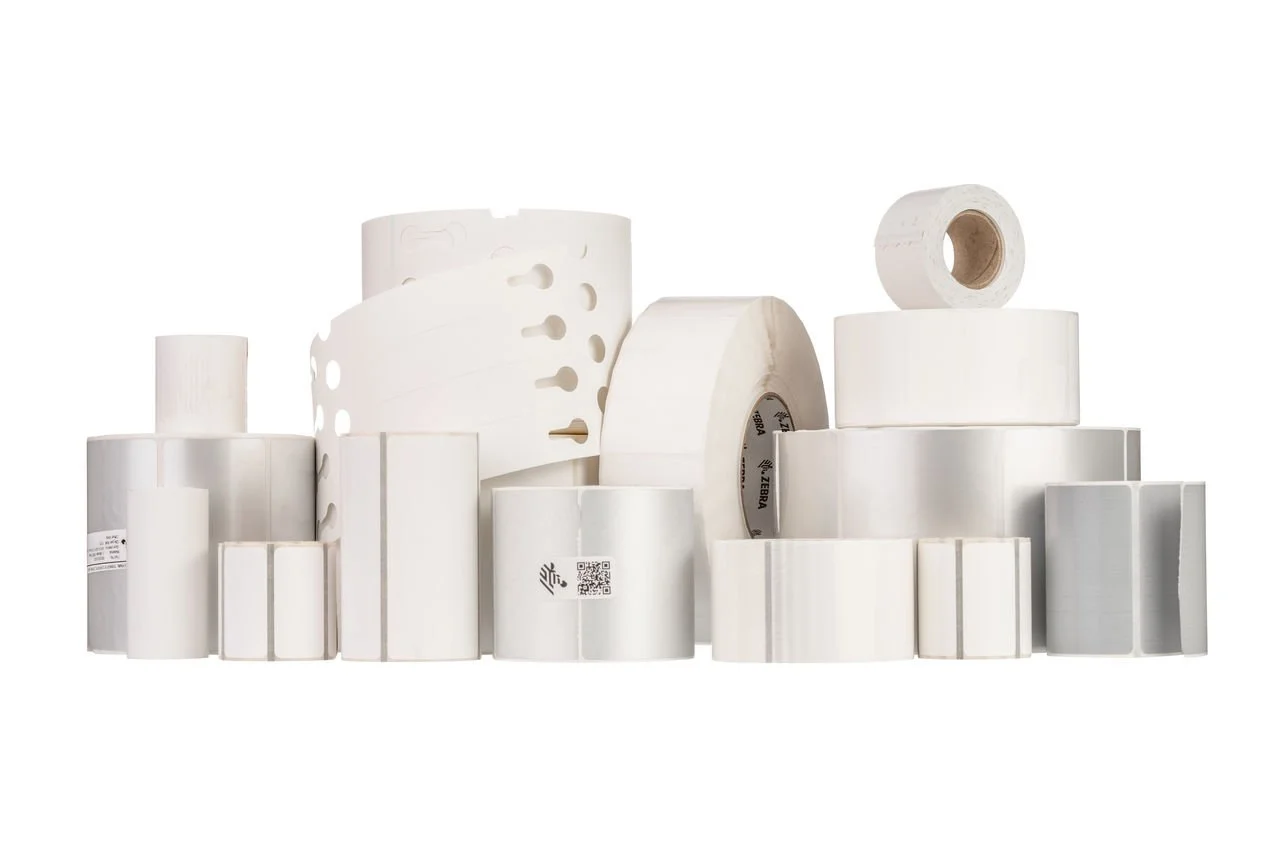WHAT IS A THERMAL PRINTER?
Today we are answering one of our customers' most important questions: what is a thermal printer?
By definition, a thermal printer uses heat and pressure to produce an image. Now there are a couple of different types of thermal printers out in the wild. You have direct thermal and thermal transfer. The best way to describe direct thermal is that the ink is inside the paper, no thermal ribbon is required you have to buy a special label which has a coating that reacts to heat and pressure. Thermal transfer, on the other hand, requires a ribbon and labels. The ink is on the ribbon and is transferred to the label using heat and pressure when heated. What’s the difference between direct thermal and thermal transfer?
Effectively, it’s to do with the resistance properties. Direct thermal labels react to heat, light and moisture, which makes them fade when left outside or mark/smudge really easily when rubbed against or when they get wet. Thermal transfer requires labels and a ribbon which contains the ink to be transferred onto the label. This method is resistant to light and heat but can also produce longer-lasting, smudge and chemical resistant labels depending on the properties of the label and ribbon being used. Direct thermal only exists, but any thermal transfer printer can do both.
What can I print on?
Most thermal printers support label rolls with notched, die-cut, blackmark sensing modes or continuous media and the typical print width is 4 inches. However, 6 inches and even 8 inches wide thermal printers do exist but will cost you a premium. The sensing modes are used to position the label so the thermal printer prints in the correct place. Continuous doesn’t use sensing, it just prints and is either torn or cut when it’s finished printing, most commonly used for thin cardboard tags. The paper is supplied two ways: either on a roll that fits the particular printer or externally through a fan fold or a bigger roll from another spindle. Different sizes of thermal printers support different roll sizes and fan-fold options, so be careful when looking for both.
What types of thermal printer are available?
The types of thermal printers can be split into five different categories. Mobile thermal printers, which are the smallest, and you guessed it, are light, small and can be carried around on an operator's belt clip. They are also only direct thermal. The desktop thermal printer is the next size up and these are compact, usually take about 5 inch outer diameter rolls and have direct thermal and thermal transfer options. Then you have industrial versions, usually an all-metal shell, more durable take 8-inch outer diameter rolls and have stronger software feature sets. Finally, you have the thermal print engine. These are normally mounted above conveyor belts, have external spindles for supplying the labels and connect to an applicator that applies the label to a product after printing.
Why would I choose a thermal label printer?
Thermal printers being built to take rolls in this way gives them some huge advantages. The number of labels they can produce in a short time is one, as some run as fast as 14 inches per second. Even ones that run at only 6 inches per second print a delivery label in a second, making them super efficient. They are usually extremely robust and low maintenance. A thermal printhead is typically warrantied for 1 million inches or 12 months. Most of the time, in my experience, they exceed the 12 months of use. Being able to quickly print labels resistant to chemicals and harsh environments is also extremely desirable.
Special software options, for example, thermal printer manufacturers like TSC, have options where you can build an application for printing and run it on the printer with a keyboard or scanner for data entry, making a PC and label design software redundant. Zebra’s Link OS also offers management solutions designed to help IT support for things like remote monitoring. SATO has a similar option to TSC’s. However, their custom software can do much more as it’s able to be programmed.
What are the disadvantages?
Thermal printing is not great for using a wide range of stock. If you are using a single size, it works a dream, but using lots of different sized stock can be a pain as the operator may have to adjust sensor positioning and pressure toggles when loading the labels, which requires more operator training. Thermal printers can also only print a single colour, so if you need multiple, you have to buy pre-printed labels, then print the main body onto the label. This can drive costs up. Finally thermal printers mostly always execute commands they receive, meaning if there are label design errors or the printer driver is setup incorrectly it can cause a lot of unwanted issues.
Thanks for reading, you now have a better idea of what a thermal printer is.



